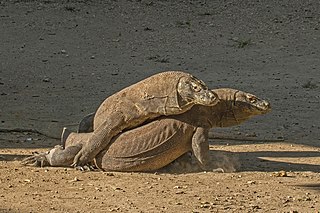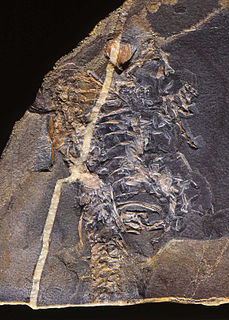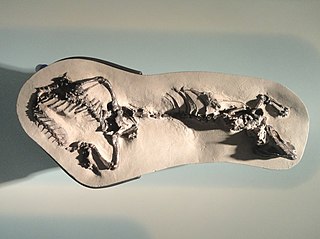
The Lepidosauria are reptiles with overlapping scales. This subclass includes Squamata and Rhynchocephalia. It is a monophyletic group and therefore contains all descendants of a common ancestor. Squamata includes snakes, lizards, and amphisbaenia. Rhynchocephalia was a widespread and diverse group 220-100 million years ago; however, it is now represented only by the genus Sphenodon, which contains a single species of tuatara, native to New Zealand. Lepidosauria is the sister taxon to Archosauria, which includes Aves and Crocodilia. Lizards and snakes are the most speciose group of lepidosaurs and, combined, contain over 9,000 species. There are many noticeable distinguishing morphological differences between lizards, tuataras, and snakes.

Squamata is the largest order of reptiles, comprising lizards, snakes and amphisbaenians, which are collectively known as squamates or scaled reptiles. With over 10,900 species, it is also the second-largest order of extant (living) vertebrates, after the perciform fish. Members of the order are distinguished by their skins, which bear horny scales or shields. They also possess movable quadrate bones, making it possible to move the upper jaw relative to the neurocranium. This is particularly visible in snakes, which are able to open their mouths very wide to accommodate comparatively large prey. Squamata is the most variably sized order of reptiles, ranging from the 16 mm (0.63 in) dwarf gecko to the 5.21 m (17.1 ft) green anaconda and the now-extinct mosasaurs, which reached lengths of over 14 m (46 ft).

The Varanidae are a family of lizards in the superfamily Varanoidea. The family, a group of carnivorous and frugivorous lizards, includes the living genus Varanus, the extinct Megalania, and a number of other extinct taxa. Varanus includes the Komodo dragon, crocodile monitor, savannah monitor, the goannas of Australia and Southeast Asia, and various other species with a similarly distinctive appearance. Their closest living relatives are the anguid and helodermatid lizards.

Mosasaurs comprise a group of extinct, large marine reptiles containing 40 genera in total. Their first fossil remains were discovered in a limestone quarry at Maastricht on the Meuse in 1764. Mosasaurs probably evolved from an extinct group of aquatic lizards known as aigialosaurs in the Earliest Late Cretaceous. During the last 20 million years of the Cretaceous period, with the extinction of the ichthyosaurs and pliosaurs, mosasaurs became the dominant marine predators. They became extinct as a result of the K-Pg event at the end of the Cretaceous period, about 66 million years ago.

Toxicofera is a proposed clade of scaled reptiles (squamates) that includes the Serpentes (snakes), Anguimorpha and Iguania. Toxicofera contains about 4,600 species, of extant Squamata. It encompasses all venomous reptile species, as well as numerous related non-venomous species. There is little morphological evidence to support this grouping, however it has been recovered by all molecular analyses as of 2012.

Pythonomorpha was originally proposed by paleontologist Edward Drinker Cope (1869) as a reptilian order comprising mosasaurs, which he believed to be close relatives of Ophidia (snakes). The etymology of the term Pythonomorpha comes from the Greek Python and morphe ("form"), and refers to the generally serpentine body plan of members of the group. Cope wrote, "In the mosasauroids, we almost realize the fictions of snake-like dragons and sea-serpents, in which men have been ever prone to indulge. On account of the ophidian part of their affinities, I have called this order Pythonomorpha." Cope incorporated two families, the Clidastidae and the Mosasauridae.

Aigialosauridae is a family of Late Cretaceous semiaquatic varanoid lizards closely related to the mosasaurs. Regarded by some paleontologists as a distinct monophyletic group and by others as an adaptive grade within the basal mosasauroids, recent molecular and morphological data suggests that they are the oldest known members of the lineage leading to the mosasaurs.

Adriosaurus is an extinct genus of squamate which lived in what is now Slovenia and other parts of Europe during the Late Cretaceous. It was snake-like and grew 10 to 12 inches. This is the first fossil record of vestigial limbs in lizards. It lost its manus and forearm completely in order to elongate its axial skeleton. These unique anatomical features led to discussions of the evolutionary patterns of limb reduction in Squamata.

Sineoamphisbaena is an extinct genus of squamate of uncertain phylogenetic placement. Its fossils are known from the Late Cretaceous deposits in Inner Mongolia, China. Wu et al. (1993), Wu et al. (1996) and Gao (1997) proposed and argued that it was the oldest known amphisbaenian; this, however, was challenged by other authors, such as Kearney (2003) and Conrad (2008), who instead assigned Sineoamphisbaena to the group of squamates variously known as Macrocephalosauridae, Polyglyphanodontidae or Polyglyphanodontia.

Platynota is a group of anguimorph lizards and thus belongs to the order Squamata of the class Reptilia. Since it was named in 1839, it has included several groups, including monitor lizards, snakes, mosasaurs, and helodermatids. Its taxonomic use still varies, as it is sometimes considered equivalent to the group Varanoidea and other times viewed as a distinct group. It is phylogenetically defined as a clade containing Varanidae. It also includes many extinct species.

Aigialosaurus is an extinct genus of Late Cretaceous marine or semiaquatic lizard classified as part of the family Aigialosauridae within the Mosasauroidea. Exclusively found in deposits of Cenomanian age near Hvar, Croatia, the genus contain one valid species, A. dalmaticus. According to recent molecular and morphological data, Aigialosaurus is the oldest known member of the lineage leading to large Cretaceous marine reptiles called mosasaurs, a group most closely related to snakes among living squamates.

Monstersauria is a clade of varanoid lizards, defined as all taxa more closely related to Heloderma than Varanus. It includes Heloderma, as well as several extinct genera, such as Estesia, Primaderma and Gobiderma, but it was found to be polyphyletic in the most recent and complete squamate phylogenetic analysis by Reeder et al. (2015).

Reptiles arose about 310–320 million years ago during the Carboniferous period. Reptiles, in the traditional sense of the term, are defined as animals that have scales or scutes, lay land-based hard-shelled eggs, and possess ectothermic metabolisms. So defined, the group is paraphyletic, excluding endothermic animals like birds and mammals that are descended from early reptiles. A definition in accordance with phylogenetic nomenclature, which rejects paraphyletic groups, includes birds while excluding mammals and their synapsid ancestors. So defined, Reptilia is identical to Sauropsida.

Huehuecuetzpalli mixtecus is an extinct lizard from the Early Cretaceous Tlayúa Formation in Tepexi de Rodríguez, Central Mexico. Although it is not the oldest known lizard, Huehuecuetzpalli may be the most basal member of Squamata, making it an important taxon in understanding the origins of squamates. It may or may not be a basal member of Iguania, a large clade of lizards that traditionally includes the iguanas and their close relatives, chameleons, and agamids: if it is an iguanian, H. mixtecus represents the earliest major offshoot of the squamate evolutionary tree.

Polyglyphanodontia is an extinct clade of lizards from the Cretaceous that includes around a dozen genera. Polyglyphanodontians were the dominant group of lizards in North America and Asia during the Late Cretaceous. Most polyglyphanodontians are Late Cretaceous in age, though the oldest one, Kuwajimalla kagaensis, is known from the Early Cretaceous Kuwajima Formation (Japan). Early Cretaceous South American taxon Tijubina, and possibly also Olindalacerta, might also fall within Polyglyphanodontia or be closely allied to the group, but if so, they would be two of only three Gondwanan examples of an otherwise Laurasian clade. They produced a remarkable range of forms. Chamopsiids, including Chamops, were characterized by large, blunt, crushing teeth, and were most likely omnivores. Macrocephalosaurus, from the Gobi Desert, was a specialized herbivore; it grew to roughly a meter long and had multicusped, leaf-shaped teeth like those of modern iguanas. Polyglyphanodon, from the Maastrichtian of Utah, was another herbivore, but its teeth formed a series of transverse blades, similar to those of Trilophosaurus. Peneteius had remarkable, multicusped teeth, similar to those of mammals. The polyglyphanodontids first appear in the latter part of the Early Cretaceous in North America, and became extinct during the Cretaceous-Paleogene extinction event. Polyglyphanodontians closely resembled the teiid lizards, and purported teiid lizards from the Late Cretaceous appear to be polyglyphanodontians. The only species known to have survived the Cretaceous was Chamops, which survived until the very early Ypresian.

Gekkonomorpha is a clade of lizards that includes geckos and their closest relatives. Although it was first named in 1900, Gekkonomorpha was not widely used as a formal taxon until it was given a phylogenetic definition in the 1990s. Under this definition, Gekkonomorpha is a stem-based taxon containing the node-based taxon Gekkota, the group that includes the last common ancestor of all living geckos and its descendants. The extent of Gekkonomorpha beyond gekkotans differs between studies. For example, Lee (1998) defined Gekkonomorpha in such a way that it included not only Gekkota but the legless amphisbaenian and dibamid lizards as well. The phylogenetic analysis of Conrad (2008), which did not support a close relationship between geckos and legless lizards, used Gekkonomorpha in a much more restrictive sense so that it included only Gekkota and a few extinct lizards more closely related to Gekkota than to any other living group of lizards. Some of the most recent phylogenetic analyses suggest that the extinct lizards Gobekko and Parviraptor may be stem gekkotans, although other analyses find that Gobekko may instead be within Gekkota and Parviraptor outside Gekkonomorpha.
Gobiguania is an extinct clade of iguanian lizards from the Late Cretaceous. All known gobiguanians are endemic to the Gobi Desert of Mongolia. Gobiguania was given a phylogenetic definition by Jack Conrad and Mark Norell in 2007 as all taxa more closely related to Anchaurosaurus gilmorei than to Iguana iguana, Crotaphytus collaris, or Agama agama. According to Conrad and Norell's phylogenetic analysis, Gobiguania includes Anchaurosaurus as well as several other Late Cretaceous lizards such as Ctenomastax, Temujinia, Saichangurvel, and Zapsosaurus. A phylogenetic analysis published in 2012 indicated that three other lizard genera — Igua, Isodontosaurus, and Polrussia, all from Mongolia and all from the Late Cretaceous — are also gobiguanians. Below is a cladogram from the analysis:
Hoyalacerta is an extinct genus of lizard known from the type species Hoyalacerta sanzi, which is from the Early Cretaceous Las Hoyas fossil site in Spain. Hoyalacerta was named in 1999 and is considered either a member of the group Iguania or a stem squamate, meaning that it lies outside the squamate crown group that includes all living lizards and snakes. Hoyalacerta is a small lizard with an elongated body and short limbs. It is thought to have spent most of its time on the ground. Several other lizards are also known from Las Hoyas, including Meyasaurus, Scandensia, and Jucaraseps. Features of Hoyalacerta that distinguish it from other Las Hoyas lizards include smooth skull bones, simple cone-shaped teeth, and short limbs relative to body length.
Myrmecodaptria is an extinct genus of scleroglossan lizard from the Late Cretaceous Djadokhta Formation in Ukhaa Tolgod, Mongolia. The type and only species, Myrmecodaptria microphagosa, was named in 2000 by paleontologists Gao Keqin and Mark Norell. Myrmecodaptria is known from a single holotype skull and lower jaws. It is distinguished from all other lizards by its extremely elongated skull. The eyes are placed close to the snout, which is short and rounded. The top of the skull is covered in bony knobs called osteoderms. The parietal bone at the back of the skull is elongated and about as long as the frontal bones, which are the usually the longest bones along the top of the skull in lizards. The squamosal bone at the back of the skull reaches forward to connect with the jugal bone behind the eye, forming a thin arch between the temporal fenestrae. Myrmecodaptria also has fewer and more widely spaced teeth in its jaws than do most other lizards.

Dolichosauridae is a family of Late Cretaceous aquatic varanoid lizards closely related to the mosasaurs. The family contains seven genera.
















